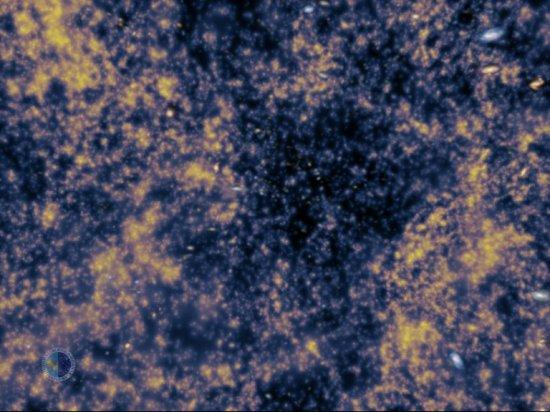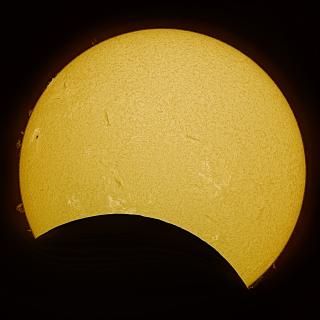The results of these investigations, conducted by astronomers of the Instituto de Astrofísica de Canarias and the University of Nottingham, will be published soon in The Astrophysical Journal Letters.
Astronomers of the Instituto de Astrofísica de Canarias (Spain), and the University of Nottingham (UK), have found the first observational evidence that galaxies are not randomly oriented, but aligned following a characteristic pattern dictated by their large-scale structure of the dark matter distribution surrounding them. This discovery means the confirmation of one of the fundamental aspects of galaxy formation theory and implies a direct link between the global properties of the Universe and the individual properties of galaxies. Galaxy formation theories predicted such an effect, but its empirical verification has remained elusive until now. The results of this work will be published on April 1st in The Astrophysical Journal Letters.
Matter filaments
Nowadays, matter is not distributed uniformly throughout space but is instead arranged in an intricate “cosmic web” of filaments and walls surrounding bubble-like voids. Regions with high galaxy concentrations are known as galaxy clusters whereas low density regions are termed voids. This inhomogeneous distribution of matter is called the Large-Scale distribution of the Universe. When the Universe is considered as whole this distribution has a similar appearance to the neural network of the brain. But, it was not always like this. After the Big Bang, when the Universe was much younger, matter was distributed homogeneously. As the Universe was evolving, gravitational pulls began to compress the matter in certain regions of space forming the large-scale structure that we currently observe. According to these models and theories a direct consequence of this process is that galaxies should be preferentially oriented perpendicularly to the filaments direction.
There have been several attempts to try to detect the alignments of galaxies with the large-scale structure of the Universe, but none of them have been successful due to the difficulties associated with trying to characterize the filaments. The research conducted by the astrophysical group formed by Ignacio Trujillo, Conrado Carretero and Santiago G. Patiri, has been able to measure this effect, confirming theoretical predictions. To achieve this goal, they used a new technique based on the analysis of the big voids in the large-scale structure of the Universe. In addition, they took advantage of information provided by the two largest surveys currently in existence: the Sloan Digital Sky Survey and the Two Degree Field Survey. These surveys contain positional information for more than 500000 galaxies located within a distance of one billion light-years.



